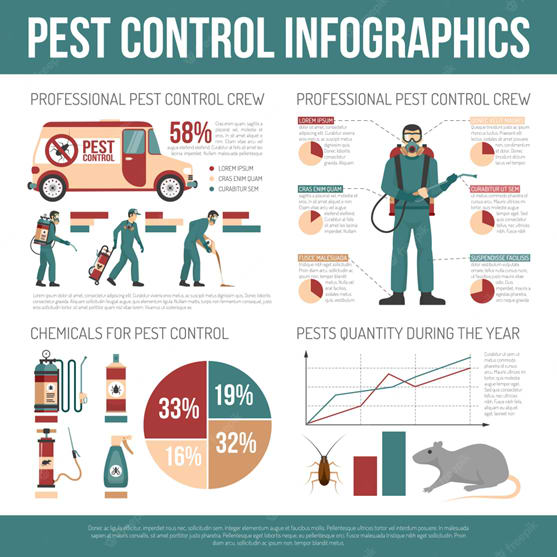Breaking Down Extermination Costs: Expectations

Pest management is a crucial part of ensuring a secure and hygienic home environment. Many homeowners fail to recognize the importance of routine pest management, which can result in infestations that can cause major stress and costly damage. This comprehensive guide will outline the costs associated with pest control, helping you understand what to expect and how to budget effectively for these necessary services.
From frequent household pests like ants and cockroaches to occasional invaders seeking refuge in your home, being proactive is key. We'll discuss why DIY pest control can be ineffective and how professional services can provide a more effective solution. By knowing the typical expenses and the factors that influence them, you can make informed decisions about keeping your home free of pests year-round. Whether you're dealing with annoying summer bugs or winter rodents, being aware of pest control costs is the first step in protecting your home and your peace of mind.
Grasping Pest Control Costs
When evaluating pest control, it is essential to understand the multiple elements that influence the overall costs. These can consist of the kind of pest being targeted, how serious the infestation is, and the methods chosen for eradication. Common household pests, such as ants or cockroaches, may require more straightforward treatments compared to more complex issues like termite infestations or bedbug infestations, which can significantly increase expenses. Additionally, the number of treatments needed to sustain a pest-free environment can also impact your financial plan.
Another aspect to look at is whether you choose professional services or attempt to handle pest control yourself. While self-managed approaches might look economical at the outset, they often do not provide durable results. Grasping the limitations of DIY solutions and realizing when it's beneficial to hire pest control experts can make a significant difference in your future spending and effectiveness of pest management.
In conclusion, seasonal trends can impact the financial implications of pest control. Certain pests are more prevalent during specific times of the year, leading to changing prices associated with preventive actions or urgent treatments. For instance, the spring season may witness an uptick in ants and wasp swarms, while the winter months could bring rodents seeking shelter. By coordinating your pest control strategy with seasonal shifts, you can better prepare for the associated costs and maintain a pest-free environment throughout the year.

Typical Home Pests and Fixes
Residences often struggle with a variety of typical pests that can disturb everyday activities and pose health risks. Ant populations are one of the most found pests, with many species entering houses in pursuit of sustenance. To successfully rid these pests, it's crucial to locate and remove the nest and clean up food remnants. Attractant traps can also aid in attracting and eliminating them, ensuring they do not reappear.
Another frequent pest is the roach, known for flourishing in dirty conditions. These sturdy insects can be tricky to remove. To tackle a cockroach infestation, thorough sanitation is crucial to remove food crumbs and mess. Utilizing bait stations and traps, along with qualified pest control services, guarantees a more efficient removal of roaches from your house.
Bed bugs have become a growing concern in numerous households, often concealing in beds and linens. Their bites can lead to irritation and sleepless nights. To spot browse around this site , look for tiny blood stains or molted skins in your bedding. Getting rid of bed bugs typically requires a combination of thorough washing of linens, vacuuming, and, in numerous cases, engaging a professional pest management specialist to manage the affected areas with appropriate insecticides.
All-Season Pest Control Methods
To maintain a pest-free and safe home through the seasons, it's important to implement preventive plans designed for each time of year. In the springtime, focus on closing off any cracks or openings around windows and entryways to prevent insects from entering as they awake from hibernation. Maintain your garden tidy by consistently caring for flowers and bushes and making sure that standing water is eliminated to deter mosquitoes and other insects.
As the summer months sets in, explore the application of organic deterrents and fences that can protect your exterior area. Consistently look for signs of infestations, particularly around food sources both inside and outdoors your home. This is also the period to address any ongoing problems like ant activity, confirming that food is stored securely and trash is managed correctly.
When fall arrives, pests often look for warmth from the cold, making it essential to examine your home for potential access points. Employ mesh covers on vents and stack pipes, and check for gaps in your foundation. In the winter months, concentrate on keeping warmth and sanitation in your home, as this prevents rats and pests. Frequent examinations and upkeep routines, such as making sure gutters are clear and well-maintained, will help ensure your home is defended year-round against pests.
